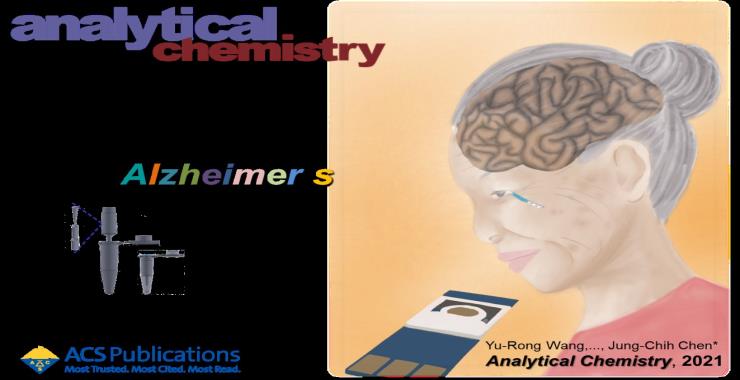High-Sensitivity and Trace-Amount Specimen Electrochemical Sensors for Exploring the Levels of β‑Amyloid in Human Blood and Tears
Institute of Biomedical Engineering
2022/07/15

-

-
-
June 8, 2021, Volume 93, Issue 22 Cover
As the occurrence of Alzheimer’s disease (AD) has increased, the detection and treatment of AD have become global social issues. Effective early detection and wide-range screening of AD allow patients to gain early control and delay brain degeneration. For these reasons, we choose electrochemical sensors to complete the detection task. Although bio-electrochemical technology for antibody and antigen sensing is not a new technology, considering the scarcity of tear samples for dementia and since the existing AD detection techniques are highly invasive and expensive for subjects, we have to use the traditional detection techniques for the early screening of Alzheimer’s disease via traceamount specimens. An AD-related protein in the eye is thought to be an important biomarker for early detection. To carry out detection using tear samples as a test specimen, a tear collection device was developed in this study that extracted 10 μL of tear fluid from a tear Schirmer strip. In this research, we distinguished healthy people in different age groups and detect Aβ in both tear and blood samples. We developed a biosensor, which could detect Aβ in tear specimen from 1 to 100 pg/mL. Also, this biosensor is inexpensive, disposable, and easy to use. In our result, the concentration of Aβ in tears was approximately 10 times more than that in blood. This study demonstrates the feasibility and prospects of future screening for AD-associated biomarkers by a dynamic comparison between blood and tears.